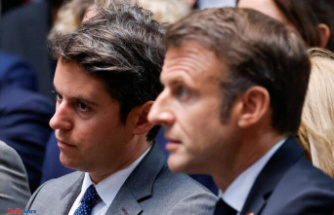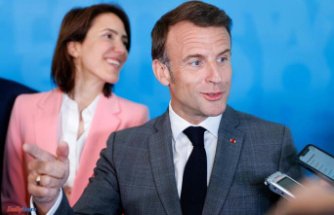A small number of demonstrators are allowed to get as close as 500 meters to the G7 summit. Courts prohibit shortening the distance. The demo should take place anyway, just like the "Star March", in which a few activists are accompanied by a large contingent of police.
A court has banned 50 demonstrators from going less than 500 meters from the venue during the G7 summit at Schloss Elmau. The organizers of the mini-demo failed before the administrative court in Munich and then also before the administrative court with their application to be allowed 200 meters closer to the castle, as spokesmen for both courts said.
The demonstrators want to protest against the meeting of leading industrial nations with a star march near the castle. The Munich Administrative Court justified the rejection with security concerns that the Free State had expressed.
The G7 critics are brought near the castle in police cars - for security reasons they are also not allowed to walk in the strictly shielded security area. The activists had criticized that. It was incompatible with the right of assembly, they argued. Still, they decided to take the opportunity.
In 2015, G7 critics fought for the opportunity to hold a rally near the hotel before the Munich Administrative Court. A delegation of no more than 50 activists could have demonstrated at that time within hearing and sight of the meeting of heads of state and government at Elmau Castle. However, the rally did not take place at the time: the opponents had demanded that they walk to the castle themselves and not be taken in police cars. The Bavarian Administrative Court rejected this on the evening before the demo. The judges explained at the time that a walk should not be permitted because of the "immediate endangerment of public safety" associated with it.
Meanwhile, several groups of demonstrators embarked on various cycling and hiking tours around Garmisch-Partenkirchen. The few activists were accompanied in blazing sunshine by a large police force. Around 100 demonstrators started in Garmisch-Partenkirchen along with several police cars and dozens of police officers on foot or by bike.
There are strict conditions for the several-hour "star march": You may not leave the paths, and dogs must be on a leash. Pyrotechnics are also forbidden, "we don't want to cause a forest fire either," said organizer Franz Haslbeck. At the same time, there are other tours by activists.
Activists from the environmental protection organization Greenpeace projected a message onto the Waxenstein in the Wetterstein mountains on the sidelines of the G7 summit. The lettering "G7: End Fossil Fuels now! Greenpeace" (roughly: "End fossil fuels now!") was hardly visible to the naked eye - but photographers caught the action with cameras.
The activists had beamed the lettering onto the mountains with a large projector from a mobile home in Grainau near Garmisch-Partenkirchen. Greenpeace activists placed a 60-meter-high peace sign made of burning candles on a rock face near Garmisch-Partenkirchen on Saturday shortly before the start of the G7 summit. A Greenpeace spokeswoman said that this was an appeal to the heads of state and government to accelerate the phase-out of fossil fuels in order to decisively advance climate protection and enable a more peaceful world.












